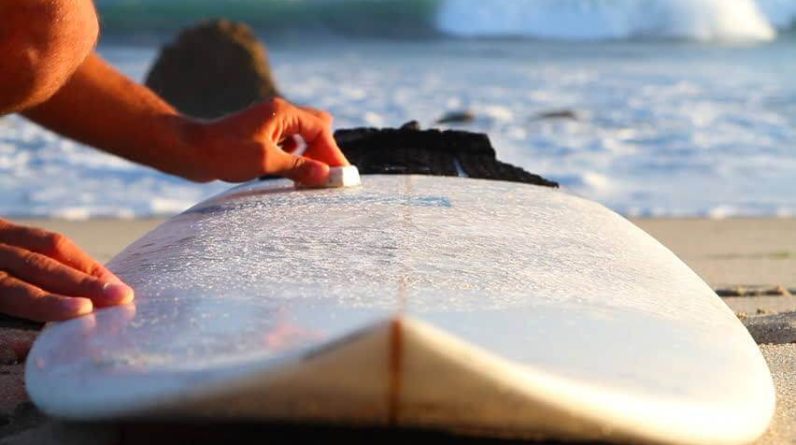
Whether you’re a seasoned surfer or just starting out, achieving optimal performance on your surfboard is essential to riding the waves with finesse. To unlock the full potential of your board, waxing is an important step that should not be overlooked. By applying wax correctly, you can enhance the grip between your feet and the board, allowing for better stability, control, and ultimately a more enjoyable surfing experience. In this article, we will guide you through the proper techniques and tips to help you achieve the perfect wax job for optimal performance on your surfboard.
Choosing the Right Wax
Consider Water Temperature
When choosing the right wax for your surfboard, it’s important to take into consideration the water temperature in which you’ll be surfing. Different waxes are designed to perform optimally in specific temperature ranges. Cold water wax is designed for water temperatures below 60°F (15°C), while cool water wax is best for temperatures between 58-68°F (14-20°C). If you’ll be surfing in warmer waters, you should opt for warm water wax, which is suitable for temperatures between 64-74°F (18-23°C). Lastly, tropical wax is recommended for water temperatures above 75°F (24°C).
Determine Water Salinity
In addition to water temperature, it’s important to take into account the salinity of the water you’ll be surfing in. Saltwater can have varying levels of salinity, and this can affect the performance of your wax. Highly saline water can break down wax more quickly, requiring more frequent reapplication. If you’ll be surfing in areas with high salinity, it’s recommended to choose a wax that is specifically designed for saltwater conditions.
Identify Wax Type
There are different types of surfboard wax available on the market, each with its own unique properties. The most common type is traditional paraffin-based wax, which provides a good balance of grip and durability. Soy-based wax is an eco-friendly alternative, which is becoming increasingly popular among environmentally conscious surfers. Other options include sticky bump wax, which is designed for extra tackiness, and topcoat wax, which is used as a final layer for added durability. Consider your personal preferences and the surf conditions you’ll be facing when choosing the appropriate wax type for your surfboard.
Preparing the Surfboard
Clean the Surfboard
Before waxing your surfboard, it’s crucial to ensure that it is clean and free from any dirt, debris, or old wax. Using a mild surfboard cleaner and a non-abrasive sponge or cloth, gently clean the surface of your board. This will ensure proper adhesion of the new wax and prevent any residue from compromising its performance. Rinse the board thoroughly with fresh water and allow it to dry completely before proceeding to the next step.
Remove Old Wax
If there is already wax on your surfboard, it is essential to remove it before applying a fresh coat. This can be done using a wax comb or a dedicated wax-removal tool. Begin by scraping off the old wax in long, even strokes, taking care not to damage the surface of the board. Once the majority of the wax has been removed, use a cloth or sponge with a surfboard wax remover to remove any remaining residue. Removing old wax will ensure a clean surface for the new wax to adhere to and improve its effectiveness.
Repair Any Damage
Before waxing your surfboard, take a moment to inspect it for any signs of damage or wear. Small dings, cracks, or other imperfections can affect the performance of your board and should be addressed prior to waxing. If you notice any damage, it is recommended to consult a professional surfboard repair technician to ensure proper repair. This will not only enhance the longevity and performance of your surfboard but also prevent any further damage that could be exacerbated during the waxing process.
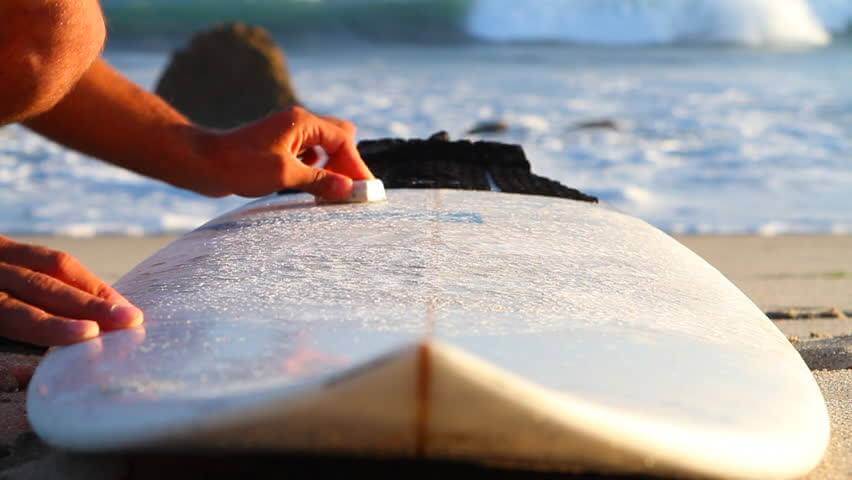
This image is property of cdn.shopify.com.
Waxing Techniques
Applying Basecoat Wax
Once your surfboard is clean and free from any old wax or damage, it’s time to apply the basecoat wax. The basecoat provides a solid foundation for the topcoat and ensures better adhesion. Start by applying the basecoat wax in long, diagonal strokes, working from the nose of the board towards the tail. Apply even pressure to ensure consistent coverage. The basecoat should be applied in a thin layer, focusing on the areas where your feet will be positioned for optimal traction. Avoid applying too much wax, as this can result in excessive build-up and affect the performance of your surfboard.
Using Topcoat Wax
After applying the basecoat wax, it’s time to add a layer of topcoat wax for increased durability and grip. The topcoat wax can be applied in a circular motion, using light to medium pressure. This will help create texture on the surface of the wax, providing additional traction. Focus on evenly distributing the topcoat wax across the entire surface of the board, paying special attention to the areas where you’ll be placing your feet. The topcoat should be applied in a slightly thicker layer than the basecoat, but be careful not to overdo it, as excessive wax build-up can hinder performance.
Applying Wax in a Pattern
As an alternative to the traditional method of wax application, some surfers prefer to apply wax in a pattern. This can be particularly useful for helping to remember the foot placement on your board. By creating a pattern with the wax, such as a diamond or a cross, you can easily locate and position your feet correctly while surfing. Experiment with different patterns and find one that suits your preferences and enhances your performance on the board.
Proper Wax Distribution
Evenly Spread the Wax
To achieve optimal performance, it is crucial to evenly spread the wax across the entire surface of your surfboard. This ensures consistent traction and prevents any areas from becoming excessively slippery. When applying wax, make sure to distribute it in a balanced manner, paying attention to even coverage. Avoid leaving any spots without wax, as this can compromise your ability to maintain control while surfing. Taking the time to evenly spread the wax will greatly enhance your surfing experience.
Avoid Excessive Wax Build-up
While it’s important to have enough wax on your surfboard for traction, it’s equally important to avoid excessive wax build-up. Too much wax can create a thick, uneven layer that hinders performance and makes it difficult to maintain grip. When applying wax, use a moderate amount and focus on smooth, even coverage. Additionally, regularly removing excess wax during maintenance will help prevent the build-up of excessive layers and ensure your surfboard performs optimally in the water.
Focus on Traction Areas
When waxing your surfboard, pay special attention to the areas where traction is most crucial. These areas are typically where your feet will be positioned while surfing. Apply an extra layer of wax to these areas, using slightly firmer pressure, to create a more textured surface and enhance grip. By prioritizing the traction areas, you’ll be able to maintain stability and control during maneuvers, resulting in improved performance on the waves.
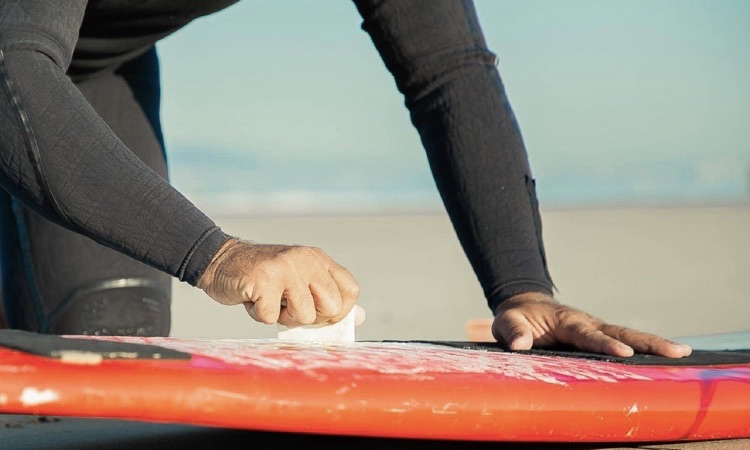
This image is property of surfsupmagazine.com.
Maintenance Tips
Regularly Re-Wax the Board
To ensure optimal performance, it’s essential to regularly reapply wax to your surfboard. How frequently you need to re-wax will depend on various factors such as water temperature, surf conditions, and the type of wax used. As a general rule, check your wax before each surf session and assess its condition. If the wax appears smooth and worn, it’s time to reapply. Regularly re-waxing your board will help maintain traction and ensure your board performs at its best.
Remove Excess Wax
Along with regular re-waxing, it’s important to remove any excess wax that may have built up on your board over time. Excessive wax build-up can affect the performance of your surfboard and make it difficult to apply new layers effectively. To remove excess wax, use a wax comb or a dedicated wax-removal tool. Start at one end of the board and scrape off the wax in long, even strokes. Be gentle to avoid damaging the board’s surface. Once you have removed the excess wax, your board will be ready for a fresh application.
Keep Wax Cool
Surfboard wax is highly sensitive to temperature and can become too soft and sticky in hot weather conditions. To prevent the wax from melting and potentially damaging your board or becoming ineffective, it’s important to keep it cool when not in use. Store your surfboard in a shaded area or use a wax case to protect it from direct sunlight and high temperatures. By taking this precaution, you can ensure that your wax remains in the best condition for optimal performance.
Understanding Wax Combinations
Experiment with Wax Brands
Part of finding the perfect wax combination for your surfboard involves experimenting with different brands. Each brand may have different formulations and additives that contribute to varying levels of grip, durability, and performance. While it may take some trial and error to find the brand that works best for you, experimenting with different wax brands will broaden your understanding of their unique characteristics and ultimately help you achieve optimal performance on your surfboard.
Mixing Different Wax Types
For even greater customization, you can experiment with mixing different types of wax to achieve the desired performance characteristics. For example, you may choose to layer a basecoat wax designed for cold water with a topcoat wax formulated for extra tackiness. Mixing different wax types allows you to tailor the grip, durability, and texture to your personal preferences and the specific surf conditions you’ll be encountering.
Understanding Wax Temperature Ranges
Every wax type has a recommended temperature range in which it performs best. Understanding these temperature ranges is crucial for achieving optimal performance. If you’re planning to surf in a location with fluctuating water temperatures, it’s advisable to use a wax specific to the lower end of the range and adjust as necessary. By selecting the appropriate wax for the water temperature, you’ll ensure the best possible traction and grip, enhancing your surfing experience.
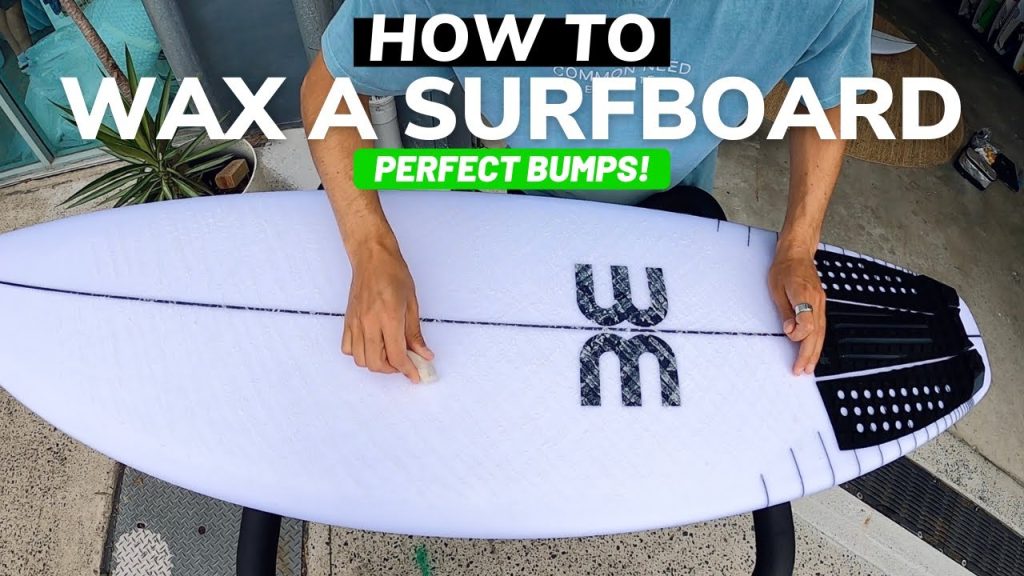
This image is property of i.ytimg.com.
Wax Removal Techniques
Using a Wax Comb
When it’s time to remove old wax or excess build-up, a wax comb is a handy tool to have. Start by using the comb’s straight edge to scrape off the wax in long, even strokes. Apply gentle pressure to avoid damaging the board’s surface. Use the comb’s jagged edge to create texture on the remaining wax, providing a better surface for the new wax to adhere to. Using a wax comb is an effective and efficient way to remove wax and prepare your surfboard for a fresh application.
Using a Wax Remover
In addition to a wax comb, there are wax removers available specifically designed to help remove old wax and residue. These solvent-based products can effectively break down the wax, making it easier to remove with a cloth or sponge. Apply the wax remover to the board’s surface and let it sit for a few minutes. Then, use a cloth or sponge to wipe away the dissolved wax. This method can be particularly useful for boards with stubborn wax build-up or hard-to-reach areas.
Removing Residue with Sticky Tape
Another technique for removing wax residue is to use sticky tape. Apply a strip of tape to the remaining wax and gently press it down. Once the tape adheres to the wax, peel it off quickly in one smooth motion. The sticky tape will lift away the wax residue, leaving your surfboard with a clean surface. This method is particularly effective for small spots or minimal build-up and can be done quickly and easily with readily available household items.
Alternative Waxing Options
Eco-friendly Wax Alternatives
For surfers who are environmentally conscious, eco-friendly wax alternatives are becoming increasingly popular. These waxes are typically made from natural ingredients such as soy or plant-based oils, reducing the environmental impact associated with traditional paraffin-based waxes. Eco-friendly wax options provide comparable grip and performance while minimizing harm to the ocean and marine life. By choosing these alternatives, you can enjoy optimal performance while contributing to the preservation of our precious surfing environments.
Using Traction Pads
Traction pads offer an alternative to traditional waxing methods and can be an excellent option for surfers who prefer a wax-free board. Traction pads consist of textured adhesive pads that are applied directly to the surfboard’s deck. These pads provide grip and traction without the need for wax. Traction pads come in various shapes, sizes, and designs, allowing you to customize your board’s appearance while enjoying enhanced performance.
Coating with Grip Sprays
Another alternative to traditional waxing is the use of grip sprays. These sprays create a thin, tacky layer on the surfboard’s deck, providing grip and traction similar to wax. Grip sprays are easy to apply and wipe clean, making them a convenient option for surfers who prefer minimal maintenance. However, it’s important to note that grip sprays may not provide the same level of traction as wax, especially in more extreme surf conditions. Consider your specific needs and preferences when deciding on alternative waxing options.
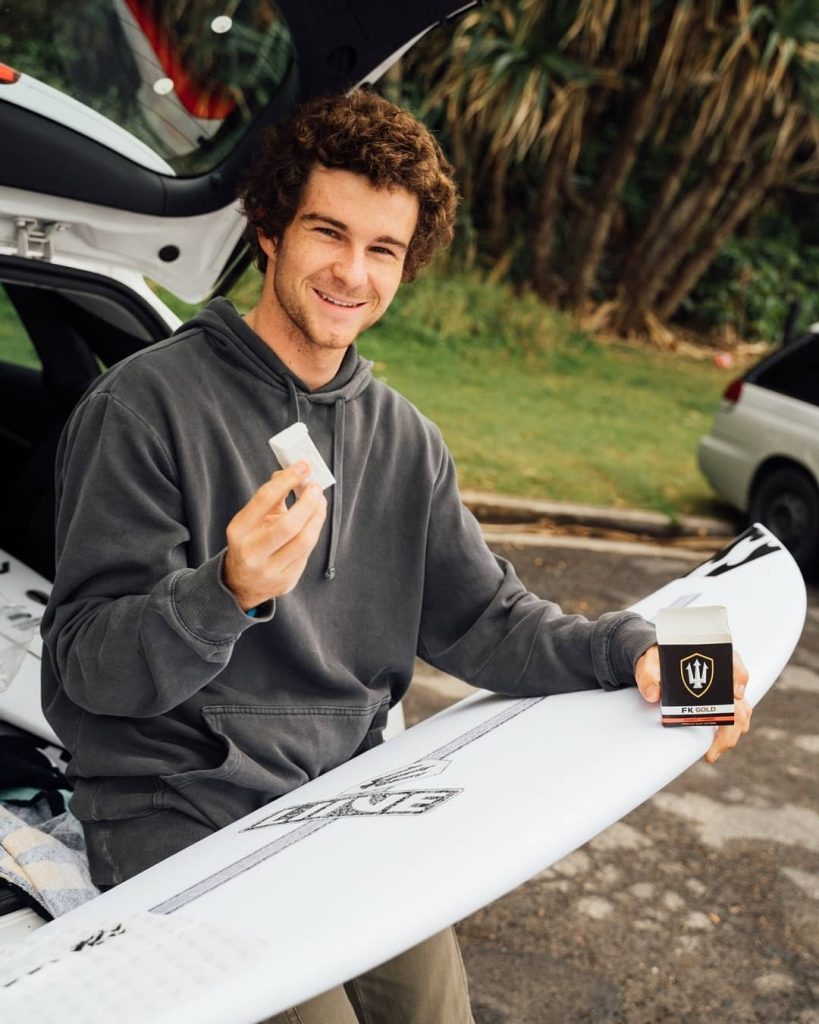
This image is property of www.boardcave.com.
Common Mistakes to Avoid
Applying Too Much Wax
One common mistake made by surfers is applying too much wax to their boards. While it might seem like more wax would provide better traction, excessive wax build-up can actually hinder performance. Overly thick layers of wax can create an uneven surface and reduce the effectiveness of the grip. Additionally, excessive wax can become slippery when wet, diminishing your ability to maintain control while riding the waves. It’s important to find the right balance when applying wax to ensure optimal performance.
Using Incompatible Wax
Using a wax that is not suitable for the water temperature or surf conditions can significantly impact your surfboard’s performance. Wax formulated for cold water will not provide the necessary grip in tropical conditions, while warm water wax may become too soft and less effective in colder temperatures. It’s essential to choose wax that is compatible with the water temperature and salinity you’ll be surfing in. By using the appropriate wax, you’ll be able to maximize your board’s traction and enjoy a smoother surfing experience.
Neglecting Wax Removal
Regular wax removal is an often-overlooked aspect of surfboard maintenance. Neglecting to remove old or excess wax can lead to a thick and uneven layer that compromises the performance of your board. Additionally, wax build-up can attract dirt, sand, and other particles, further reducing traction. To maintain optimal performance, it’s important to regularly remove old wax and excess build-up. By keeping your board clean and free from excessive wax, you’ll ensure the best possible grip and maneuverability while surfing.
Effects of Wax on Performance
Enhanced Board Traction
Perhaps the most crucial effect of wax on surfboard performance is the enhanced traction it provides. Wax creates a textured surface on the board, allowing your feet to grip securely, even when wet. The grip provided by wax enables you to maintain stability and control while performing maneuvers and riding the waves. Without proper wax application, the board becomes slippery, making it challenging to execute turns and maneuvers effectively. By properly waxing your surfboard, you’ll experience enhanced traction and improved performance on the water.
Improved Stability
In addition to enhanced traction, wax plays a vital role in improving overall stability on the surfboard. The textured surface created by the wax helps to anchor your feet firmly to the board, preventing any unwanted movement or slipping. This increased stability allows you to maintain control, balance, and confidence while riding the waves. Wax ensures that your feet stay planted and secure on the board, even in challenging surf conditions, enhancing your ability to navigate and enjoy your surfing experience.
Better Maneuverability
Properly waxing your surfboard can also contribute to improved maneuverability. The grip provided by the wax allows you to transfer weight and pressure more effectively, enabling you to execute turns, cutbacks, and other maneuvers with precision and ease. The ability to manipulate the board quickly and effortlessly greatly enhances your surfing experience and opens up a wider range of possibilities on the waves. By maintaining a well-waxed board, you’ll enjoy increased maneuverability and be able to fully explore your surfing potential.
Waxing a surfboard is a crucial step in achieving optimal performance on the waves. By choosing the right wax, properly preparing your surfboard, mastering waxing techniques, ensuring proper wax distribution, and following maintenance tips, you can enhance your surfing experience. Understanding wax combinations, utilizing proper wax removal techniques, considering alternative options, and avoiding common mistakes will further contribute to optimal performance. With the right wax and proper care, your surfboard will provide the traction, stability, and maneuverability necessary to fully enjoy the thrill of surfing.
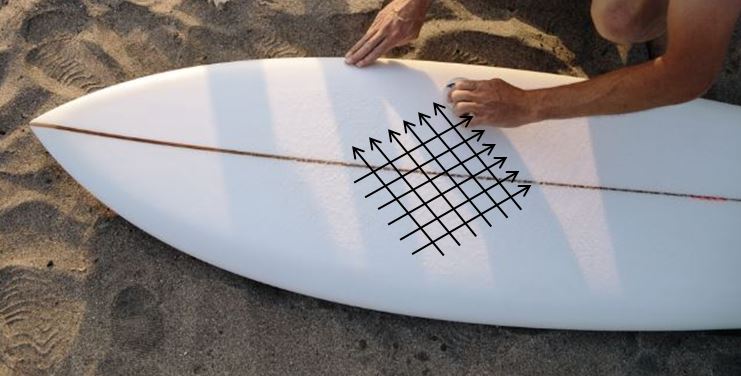
This image is property of basicplanet.com.






